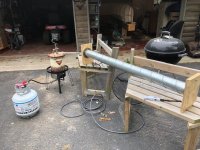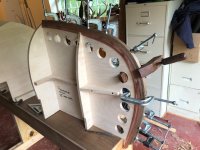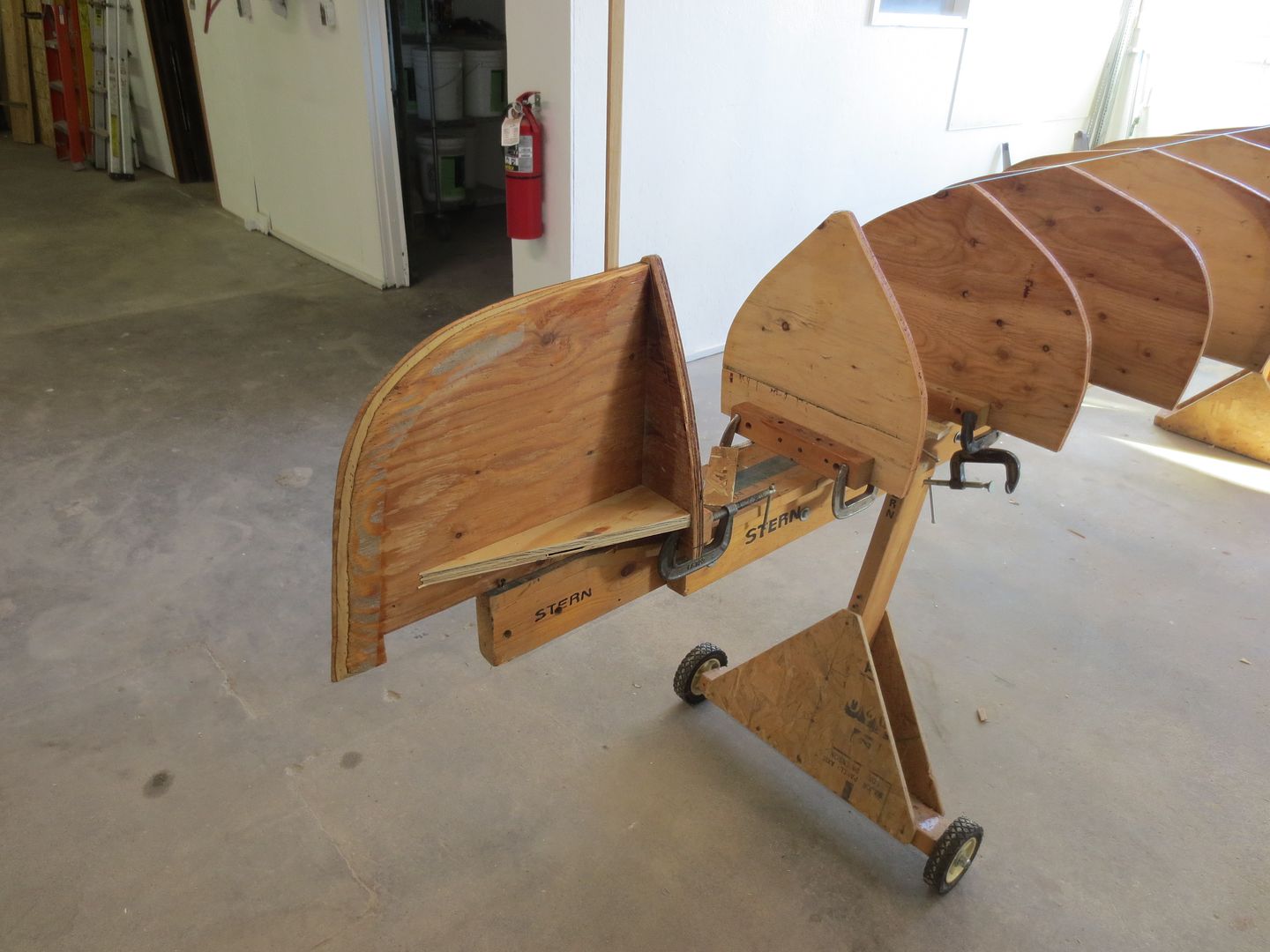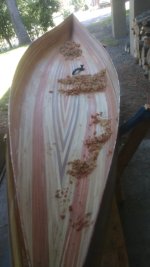I bent, clamped and glued my stems this weekend. I ended up using epoxy, for several reasons:
1. After steam bending, the grain was raised considerably, and the layers didn't align tight enough for wood glue
2. Wood glues do remain more flexible than epoxies, and I was concerned about spring back. They're still clamped to the station, so I won't know until tonight.
Unfortunately, I think one of my stems is going to end up being "practice". When I was ripping my strips, I ripped an entire cedar plank I had for inner stem, and a plank of walnut for outer stem, ending up with about twice as many strips as I needed. Inadvertently grabbed one of the inferior strips that had a knot in it. In the bending process, it cracked at the knot. If it shows tonight when I take it out of the clamps, I'll make another one.
Here's my nifty little steam chamber. Worked better than I had hoped. If you've never steam bent wood, YOU GOTTA WORK QUICK. The biggest lesson I learned between first and second stem, plan the order of clamping...... Start just before the most severe curvature, clamp through the curve, then do the ends. For the first one, I had all the clamps set, and layed out handy. Started at one end, worked to the other. I didn't get it done. Had to take it out, and re-steam.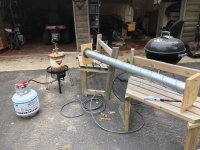
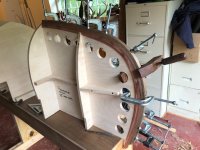
1. After steam bending, the grain was raised considerably, and the layers didn't align tight enough for wood glue
2. Wood glues do remain more flexible than epoxies, and I was concerned about spring back. They're still clamped to the station, so I won't know until tonight.
Unfortunately, I think one of my stems is going to end up being "practice". When I was ripping my strips, I ripped an entire cedar plank I had for inner stem, and a plank of walnut for outer stem, ending up with about twice as many strips as I needed. Inadvertently grabbed one of the inferior strips that had a knot in it. In the bending process, it cracked at the knot. If it shows tonight when I take it out of the clamps, I'll make another one.
Here's my nifty little steam chamber. Worked better than I had hoped. If you've never steam bent wood, YOU GOTTA WORK QUICK. The biggest lesson I learned between first and second stem, plan the order of clamping...... Start just before the most severe curvature, clamp through the curve, then do the ends. For the first one, I had all the clamps set, and layed out handy. Started at one end, worked to the other. I didn't get it done. Had to take it out, and re-steam.



